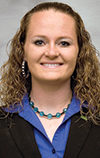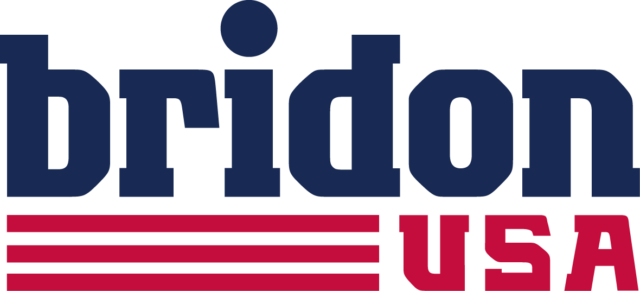Installing video cameras can help keep employees honest and allow owners and managers to monitor facilities.
“Cameras hold people accountable,” says Temple Grandin, professor of animal science at Colorado State University and animal handling expert.
“If you go out and you train people to handle cattle, 20 percent stay put. The others, you have to monitor. It’s just like monitoring speeding on the highway. When you have people handling cattle, people tend to get sloppy.”
Simply installing cameras is not enough. “In order for cameras to be effective, they need to be monitored by some entity outside of the feedyard,” says Grandin.
“If you put cameras in, you need to look at them on a systematic basis. If an employee is out of compliance, it needs to be handled. That’s how you keep them accountable.”

Simple responsibilities
Grandin suggests hiring an outside monitor to watch animal handling objectively by using the Beef Quality Assurance scoring. “Some people have put cameras in and never look at them,” she explains.
“Monitoring of the cameras is a real, formal thing and should be done in an objective manner. You need to look at electric prod use, the number of cattle falling, the number of cattle getting past the squeeze chute, the number of cattle that are miscaught, and the number of cattle that are vocalizing. They need to be objective things that you measure.”
Companies can be hired to monitor the cameras, but that can be expensive. Grandin doesn’t believe the cameras need to be monitored all day every day, but someone could check remotely several times a day for a half-hour or so and score the employees based on the BQA measurements.
“Even if you hired someone in the home to do it, that would work. Their only job is to monitor those cameras,” she says.
“What the plants do is: Random times during the day they tune into it and monitor the cameras for 15 to 30 minutes. If they are not working, then you come back. You are not monitoring all the time but at different, random times. If you have multiple shifts, each shift needs monitoring.”
Training before handling
Cameras help create employee accountability, but employees need to be trained properly in the very beginning.
“You need to train people how to handle cattle first and foremost,” Grandin says. “You should use a flag or paddle as the main driving panel, not an electric prod. At the entrance of the squeeze chute is the only place for electric prod.”
She continues, “Good cattle handling requires walking. You need to have smaller groups so they can be single file and have room to go right into the chute.
Don’t have any yelling or screaming. Fill crowd pens half-full and use following behavior. If you fill it up, they turn around on you. If you have backstop gates, hook them up with remote controls so you can hold them open.”
To help prevent mishandling, Grandin also suggests having fresh people. “You cannot overwork people. If they are working 12 hours, I guarantee bad stuff will happen.
When they get too tired, they don’t care. You can’t understaff and overwork,” she states. “You need to always have an emphasis on low-stress handling. In the rush season, you are more likely to get sloppy, so it’s important to have people ready to go.”
Camera locations
The areas where Grandin suggests having cameras to monitor animal handling are in the trucking areas for loading and unloading, cattle hospitals and any areas of the yard where a lot of animals are being handled.
“You don’t need to monitor the whole feedyard, just those areas where cattle are being worked,” she says.
Cameras are used extensively in meat processing facilities now, and that has made a big difference in the way cattle are handled.
“They are doing a really good job. The yelling and screaming has totally stopped in packing plants due to cameras,” Grandin explains. “Ten percent of the people handling cattle had to leave in the packing plants.”
In addition to monitoring animal handling, cameras can also be used to prevent theft and vandalism as well as monitor many different areas of a cattle operation, such as feed mixing, maternity pens, fuel tanks and parking areas.
Expanded industry use
“We are seeing cameras used a lot more in agriculture,” says Manuel Perez, sales and support with Valley Agricultural Software.
"In dairies, they want to see the parlor area, tank room area, breezeway and the hallways to office doors. They want to know when the cows are giving birth and when they are being fed. This helps the dairymen for security, employee management and training. Feedyards could use cameras in a similar manner.”
Perez says, “A big area feedlots could use it is in the commodity and feed area. Producers want cameras on the grain mill area just to see who is driving up and the time. A lot of commodity theft is at night. You can set it up so that after a certain hour, if there is motion detection, it will send a photo to the owner’s phone and you can see who is there.”
Cameras could be used on the ranch to monitor entrances and exits for a similar reason. Fuel areas could greatly benefit from motion-triggered cameras because fuel theft often happens at night.
Today’s cameras are much less expensive than they used to be and are a good investment for cattle producers.
They can be used to hold employees accountable, the footage can be used for employee training, they can be used to help prevent and prosecute theft, and they can allow an owner or manager to remotely monitor the facility from anywhere they have access to the Internet.
This can help producers save money and guarantee their cattle are being handled humanely each and every day. ![]()
Robyn Scherer is a freelance writer based in Colorado.
PHOTO
You don’t need to monitor the whole feedyard, just those areas where cattle are being worked. Photo courtesy of our Staff.
Snapshot of video costs
The price for video cameras varies greatly depending on the number of cameras utilized and the quality. “Budget is really the biggest factor in choice,” says Matt Voelpel, sales associate with VideoSurveillance.com.
“All of our cameras have remote-access ability. An entry level would be a DVR-based system, and the network or IP system is an upper-level system. The video quality and scalability is much better in the IP-based systems.”
He continues, “If you are a large company, you may already have a large network infrastructure. The newer IP systems can leverage upon that network system, and you can put cameras where you need them without having to run new cables.”
The cost will also vary depending on the number of cameras needed. “The number of cameras varies greatly depending on the environment and number of areas that need to be covered,” says Voelpel.
Indoor or outdoor cameras will also change the price. “Outdoor cameras need to be rated weather-type for outdoor. Most indoor systems will not have weather rating. Any outdoor camera can be put inside, however,” he explains.
The basic DVR-based system with two indoor cameras starts at around $500. The Pro Extreme Weather Outdoor PoE 8-Camera Video Surveillance System runs $6,300 and includes eight weather and vandal-proof IP cameras.
The Pro Wireless Outdoor 8-Camera system runs $6,500. A wireless system would allow producers to place cameras in remote locations that may be hard to get cables to. These systems utilize bullet or dome-type cameras.
Another camera is the PTZ Dome, good for monitoring large areas. The Pro PTZ Outdoor PoE 4-Camera Video Surveillance System runs $7,400.
According to the product specs, “The Optica P218Z is a powerful weather-proof PTZ camera that boasts 1080P HD resolution and 18x optical zoom.
The camera comes with an IP66-rated outdoor housing with a heater that protects the camera from rain, snow, hail and dust while operating in temperatures as low as -40ºF.
The vandal-proof dome also protects the camera from tampering, making it ideal for rugged outdoor surveillance.”
None of the prices of these systems include installation or monitors, but they do include the cameras, wiring and recording system. ![]()









